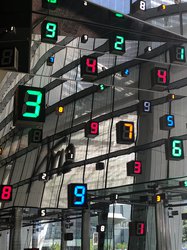
Visualising trends and patterns across millions of alarm logs every month
Advanced Analytics | Custom Analytics + Software Solutions | Data Visualisation + Reporting Solutions
Control Rooms are constantly inundated with thousands of network alarms. With overwhelming amounts of alarm data, determining root cause and priority amongst the noise is a challenge. Data visualisation, machine learning and advanced analytics can help address these challenges.
The Challenge
To improve alarm management and resolution, a large electrical infrastructure company needed a quick and visual way to identify, analyse and prioritise trends and patterns in their control room alarm data. The tool needed to draw from several sources of data, beyond alarm data, to provide a more holistic view for root-cause analysis. Functionalities, such as multiple views of the data for different user needs, scenario planning, and reporting were also required.
The Solution
Harmonic built a visual tool for interactive and dynamic presentations of problematic alarm analytics that collated many different sources of data. The focus was on visually presenting high volume alarms, persistent alarm events, switching event alarms, and repeat incident alarms. It was also designed to include auxiliary data (i.e. weather, earthquake, and site information) to provide a holistic view.
An overview of alarm status and volume is provided alongside the functionality to view the data from different visual perspectives and levels. The tool features were designed to support users in conducting root-cause analysis, decision-making for resolution, scenario planning and generates reports that support strategic decision making.
It was important for the tool to be insightful but also actionable. Clear management and accountability were achieved through annotation and assignment functionalities, which supports communication and management of problematic alarms across teams.
Alongside this visual tool, Harmonic built machine learning algorithms to enable a series of functions, such as the automatic triaging of alarms to the responsible business units, predicting successful alarm resolutions and identifying alarm ‘mutations’ using genetic sequencing methods.
The Result
- Reduction in alarm volumes and associated alarm callouts through the rationalisation of alarm management and data collection process.
- Improved operational efficiency through the reduction in the cost of effort on “fire-fighting” or resolving incidents.
- Automating processes that reduce the time and risk of manual interventions for busy subject matter experts.
- Enables proactive asset management and has led to users predicting asset failure through analysis.